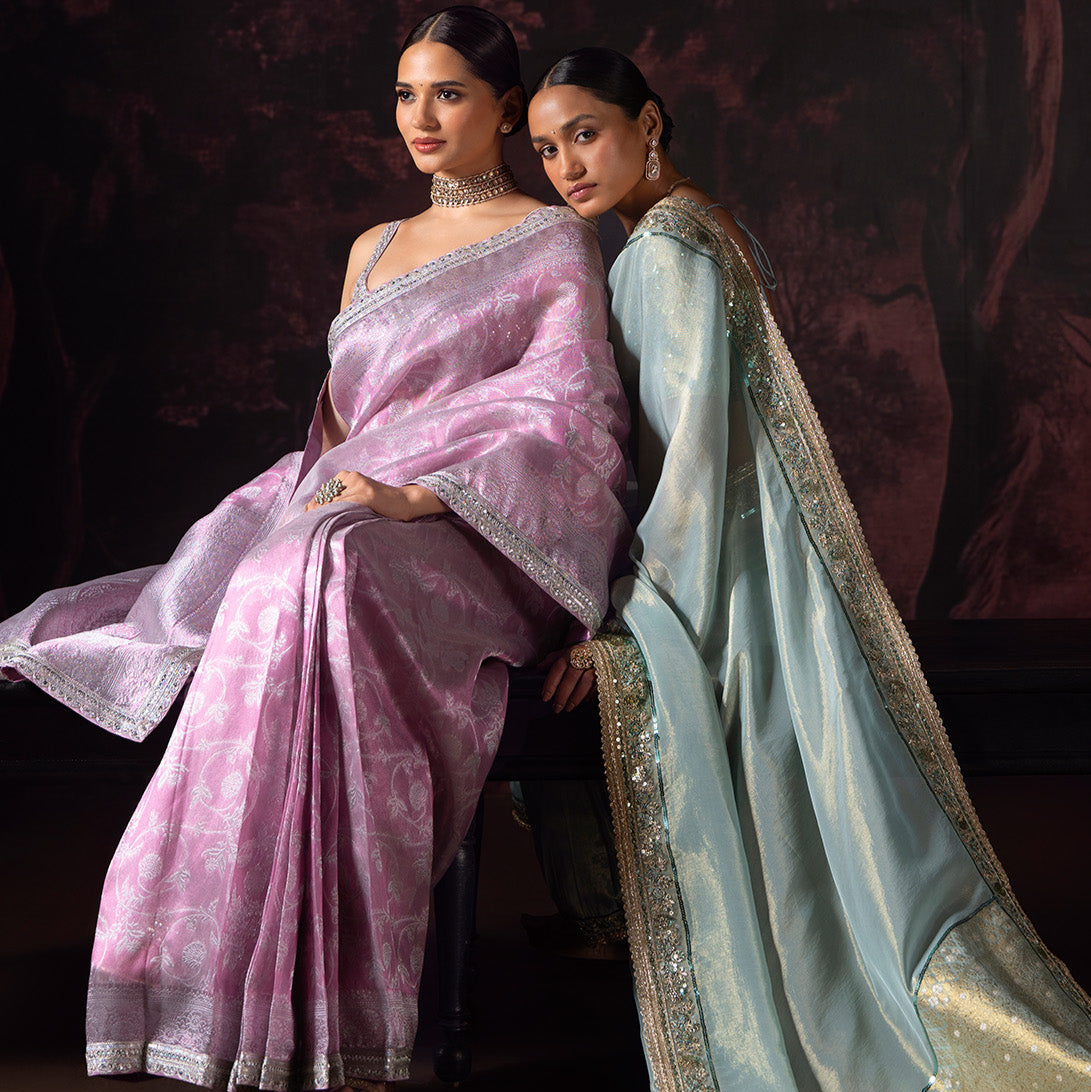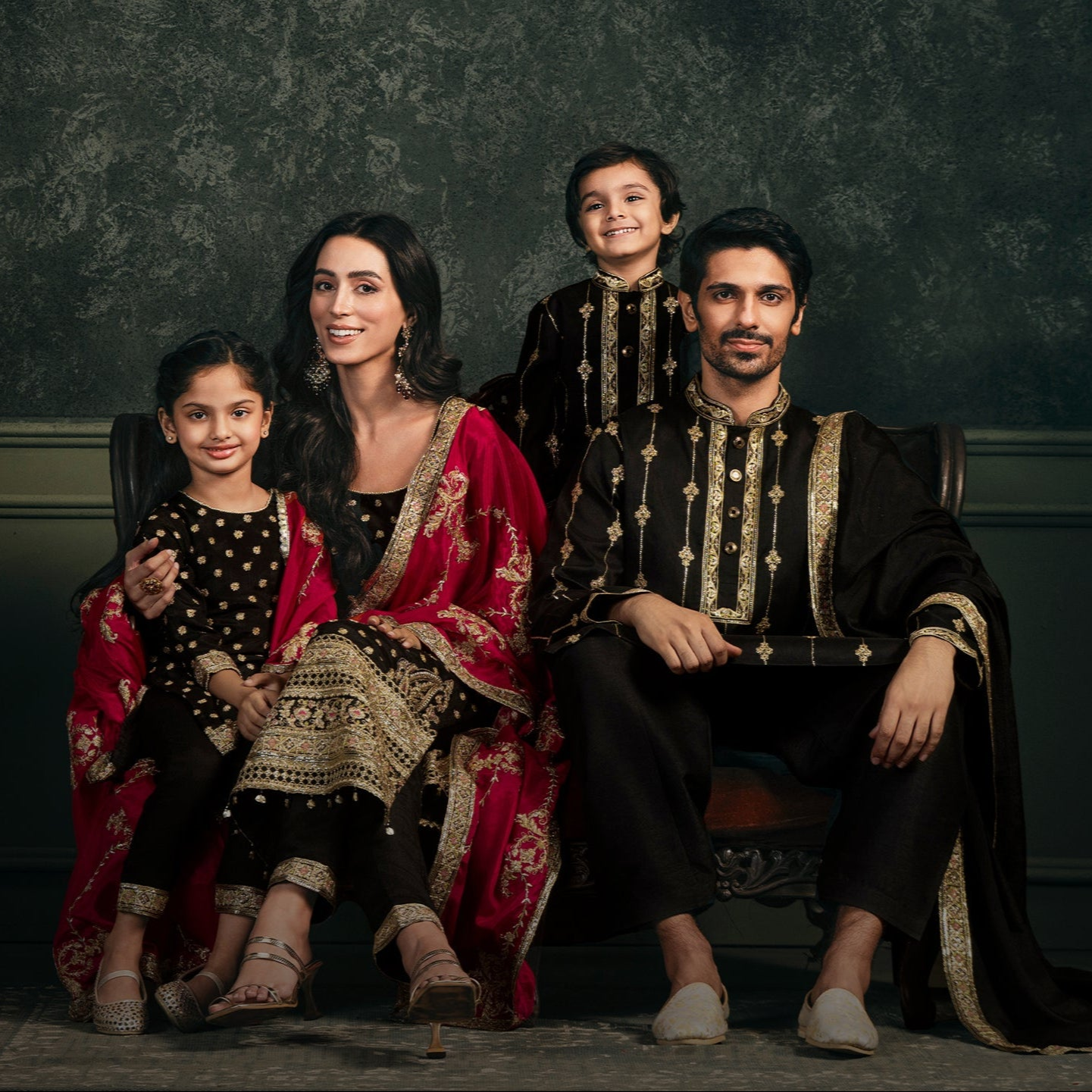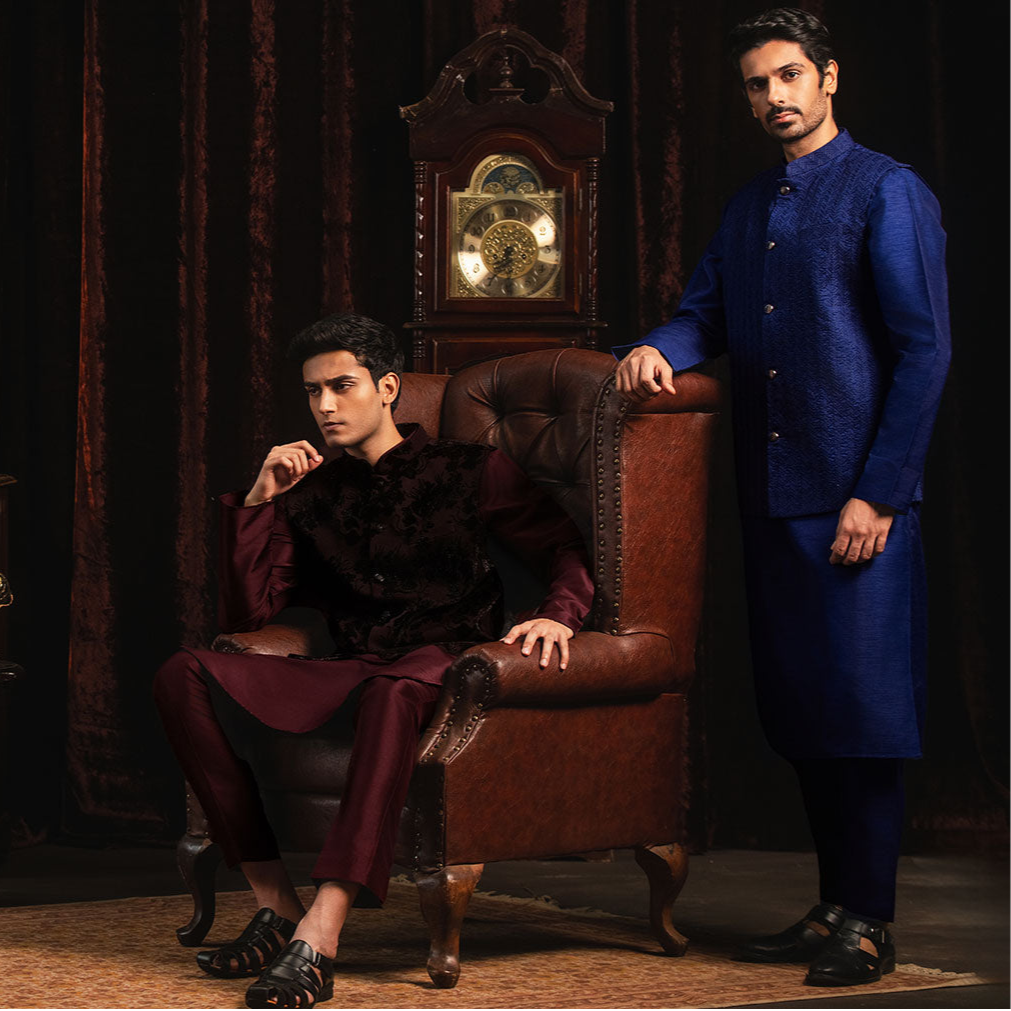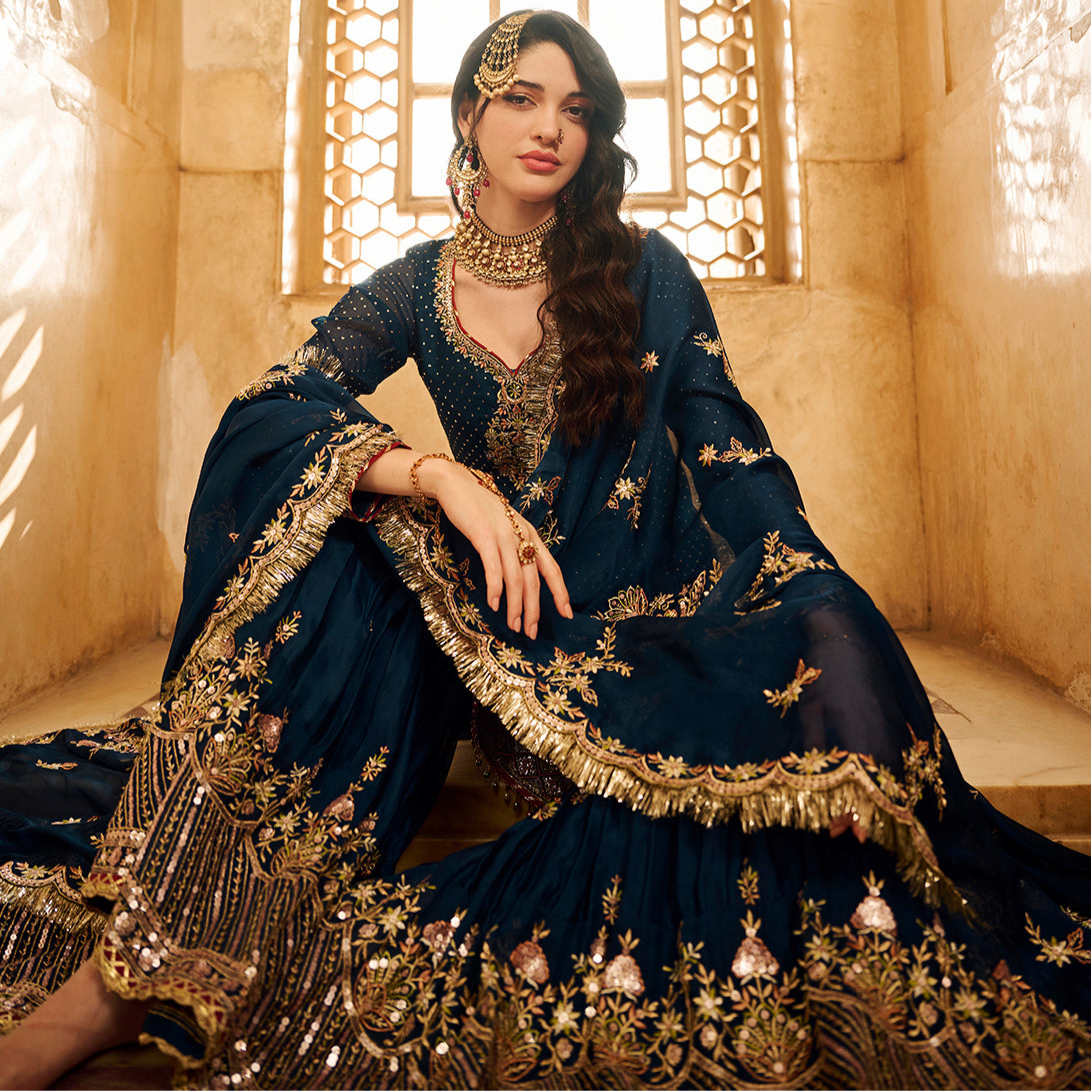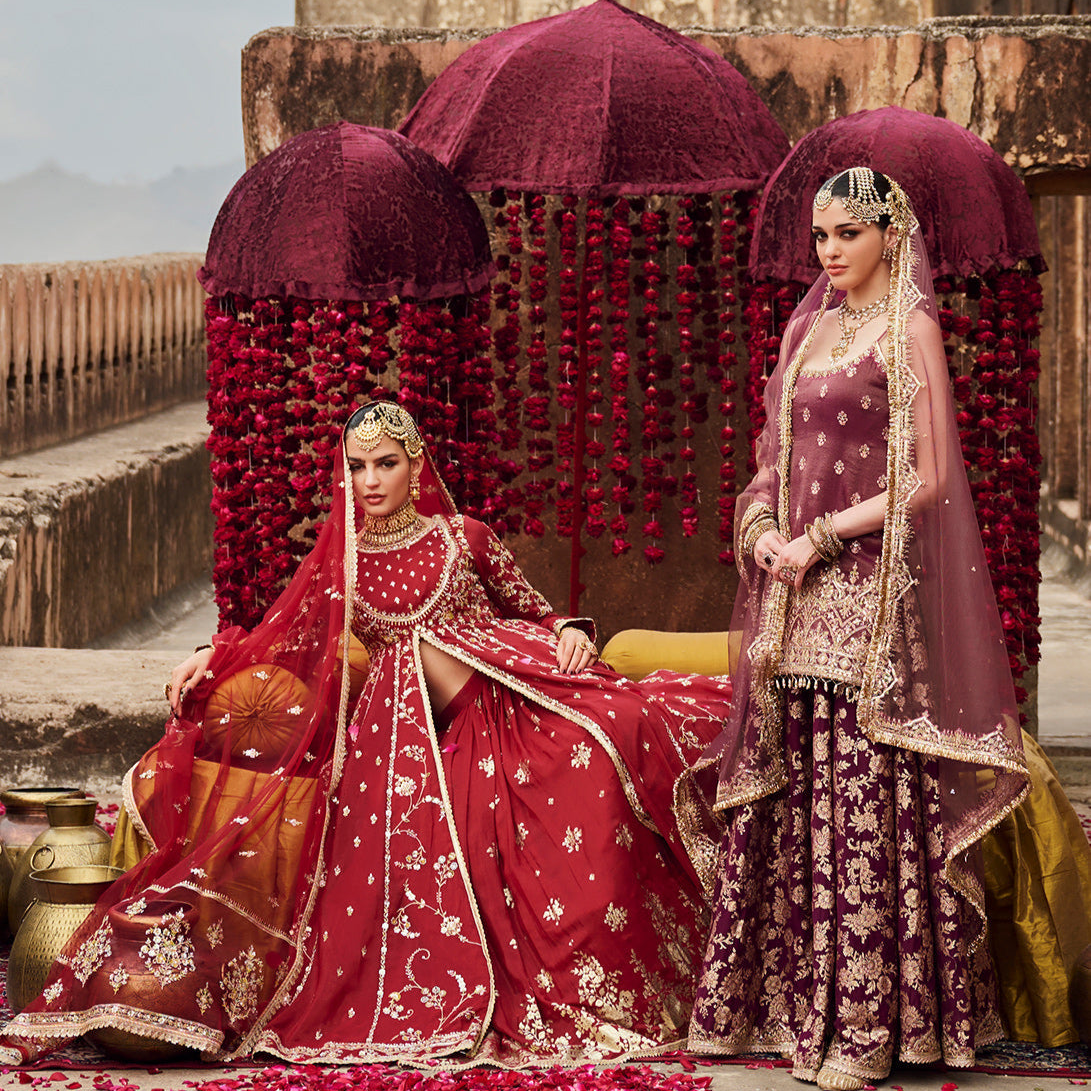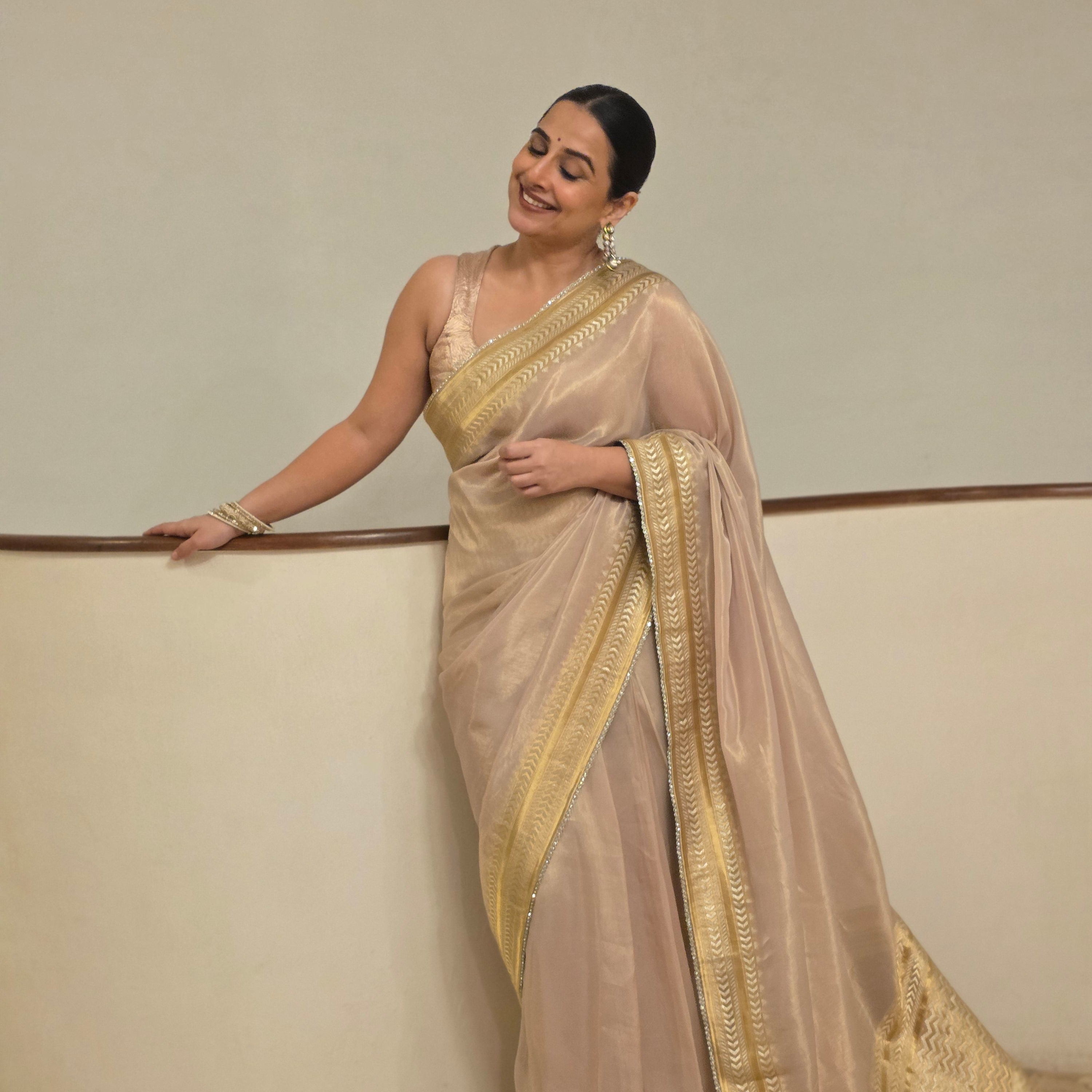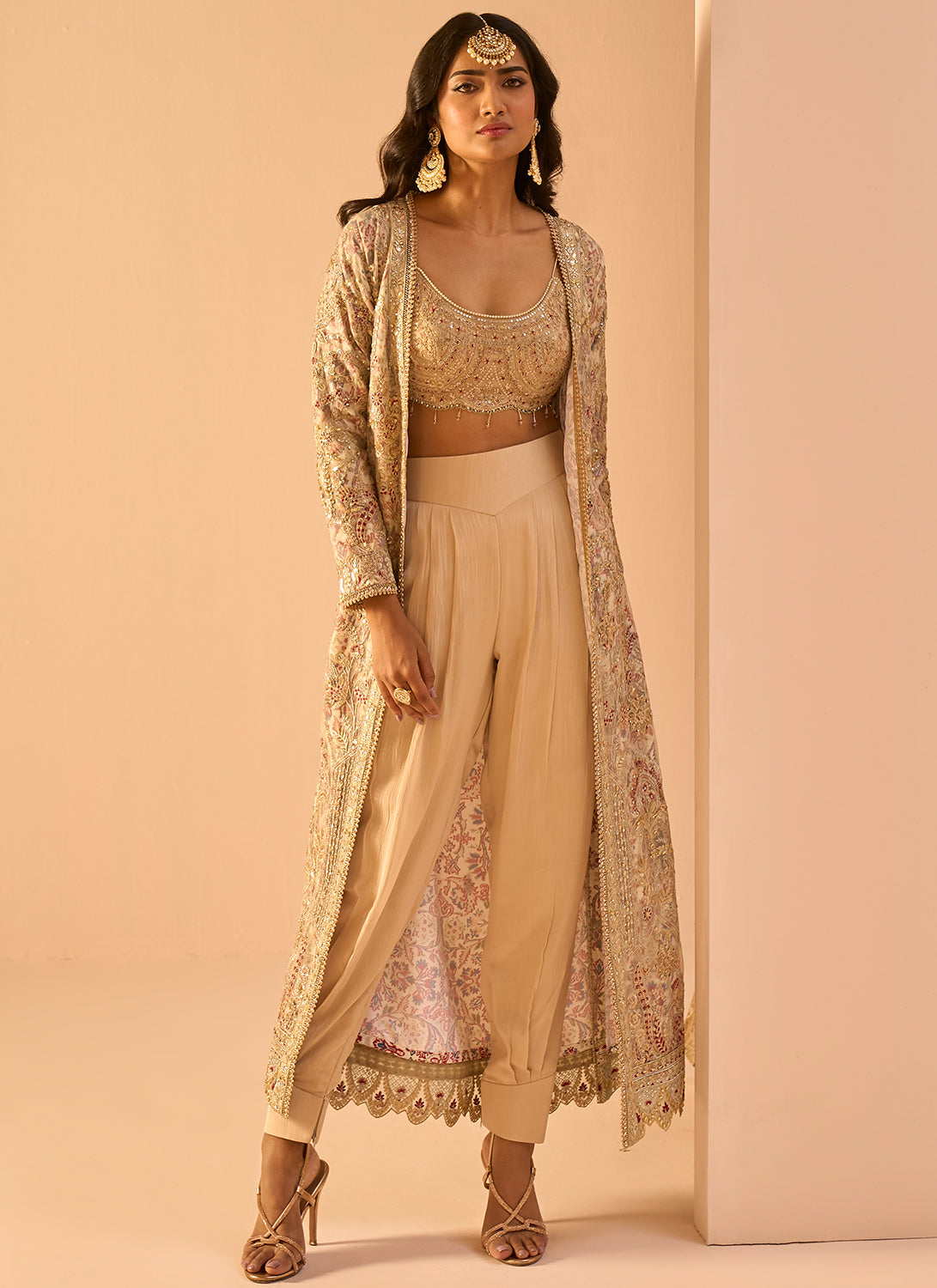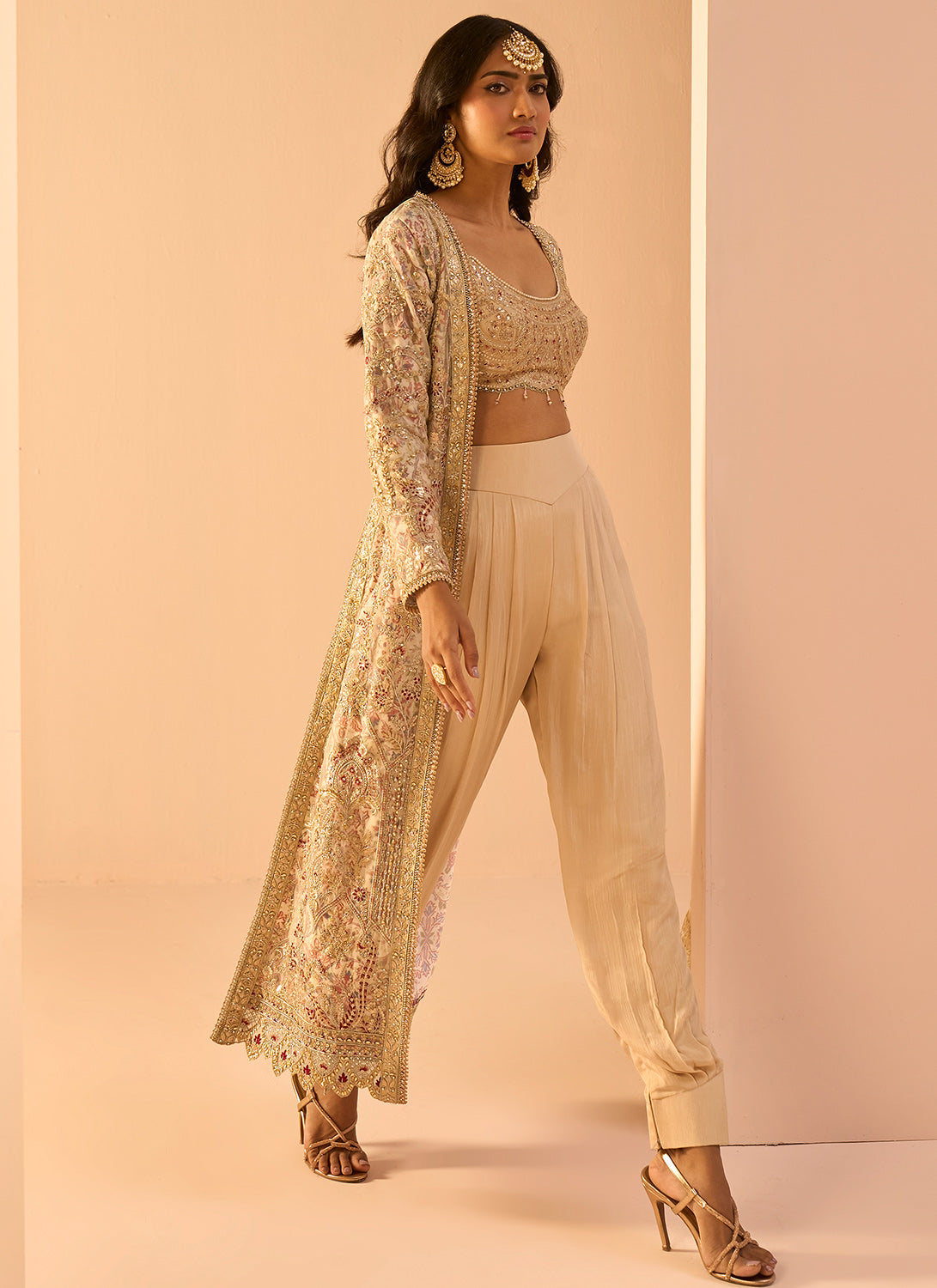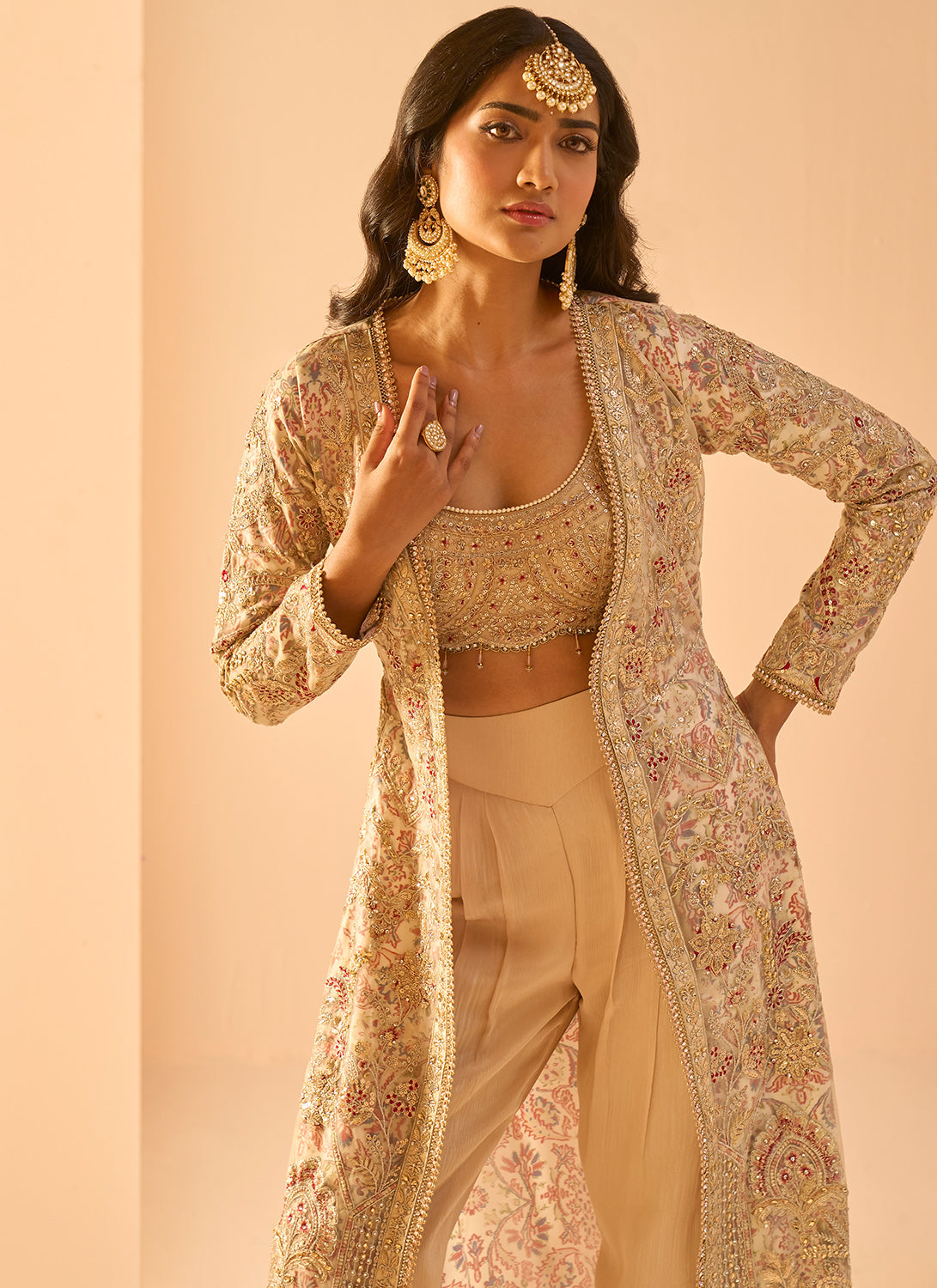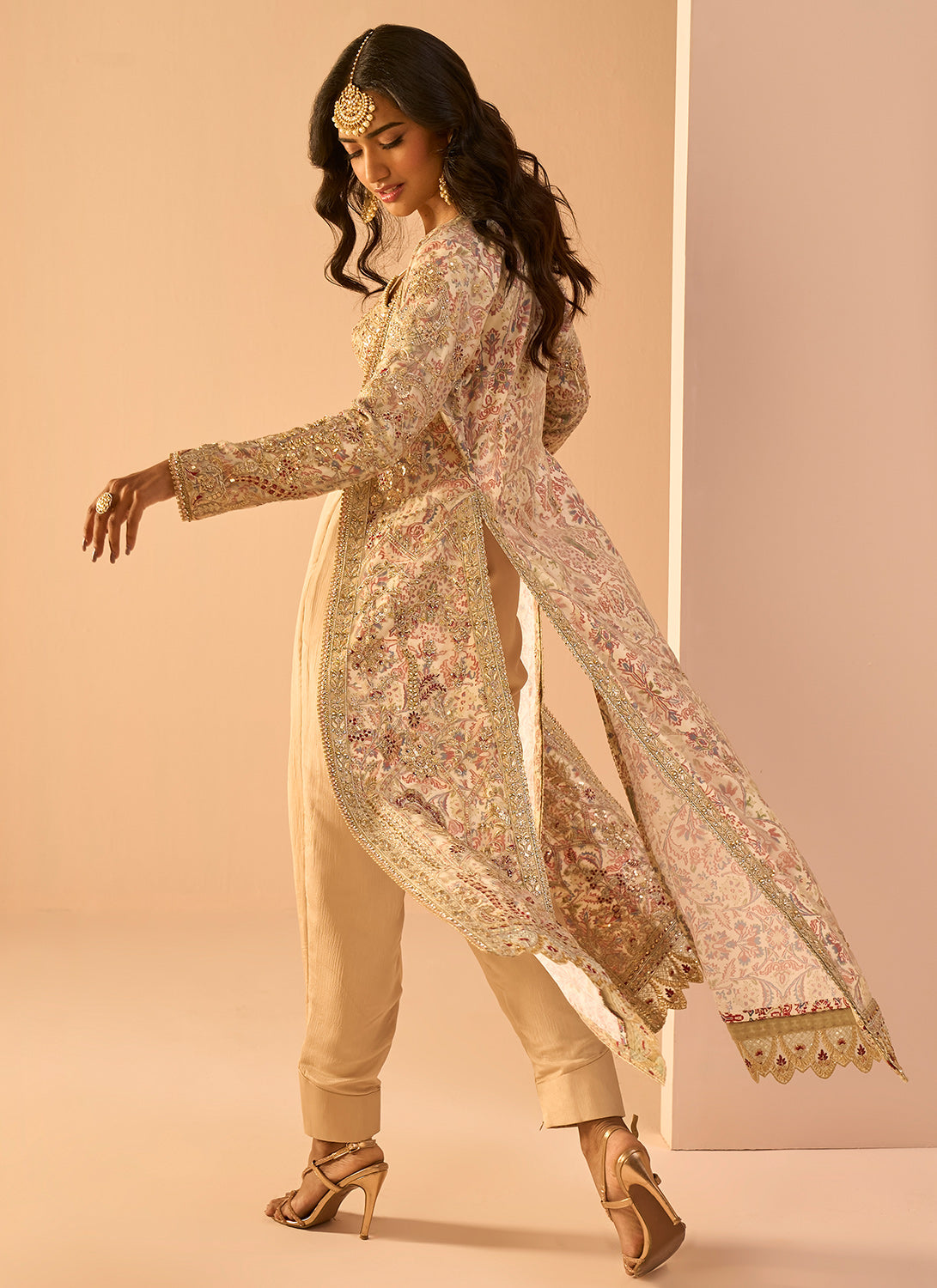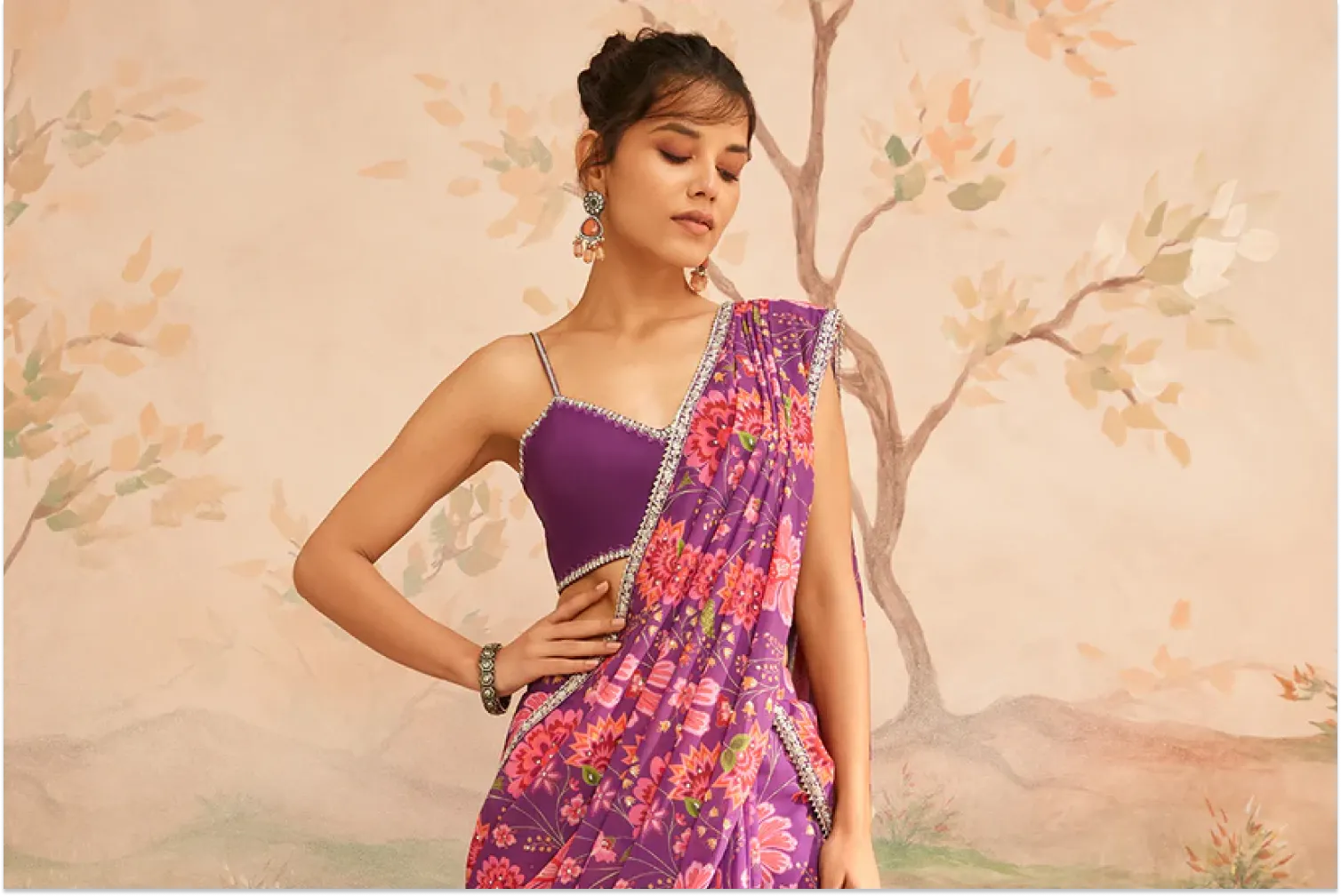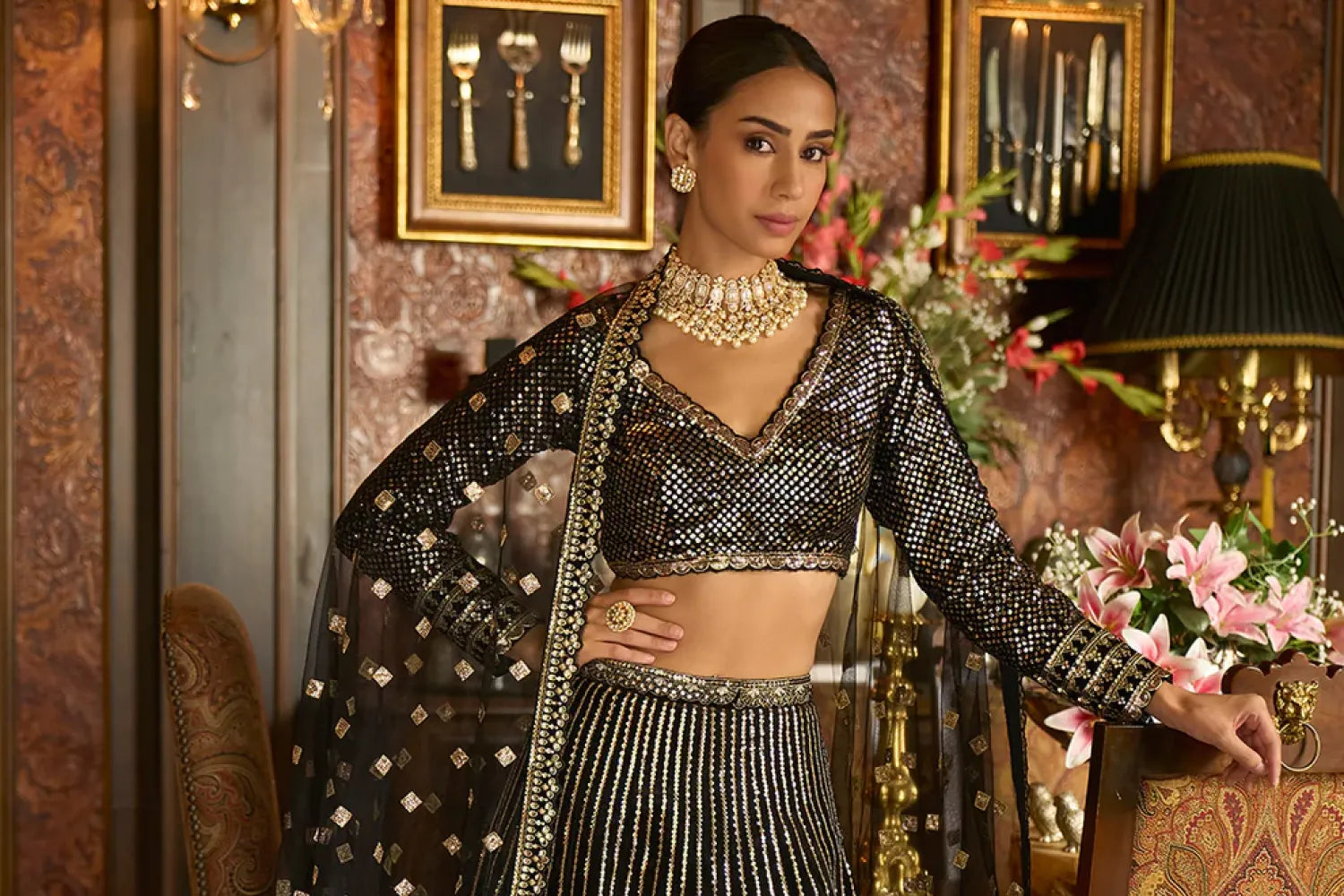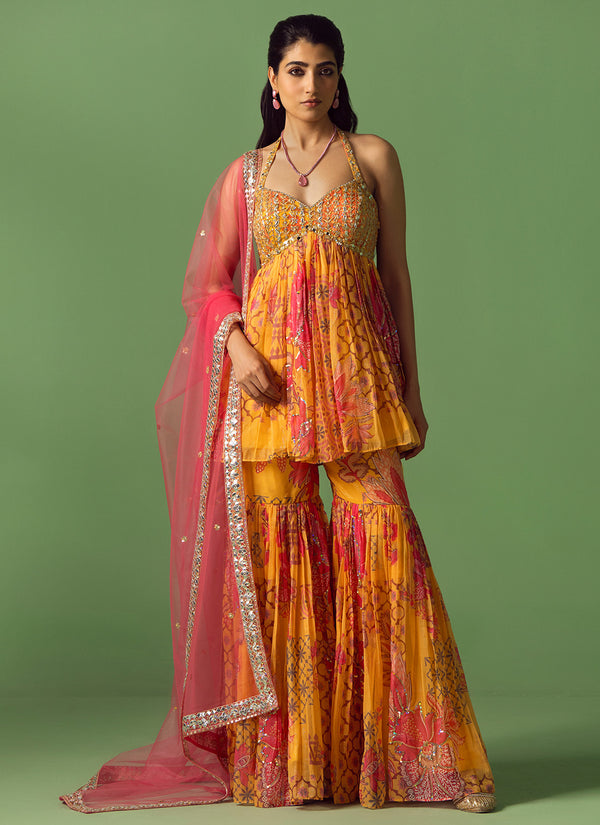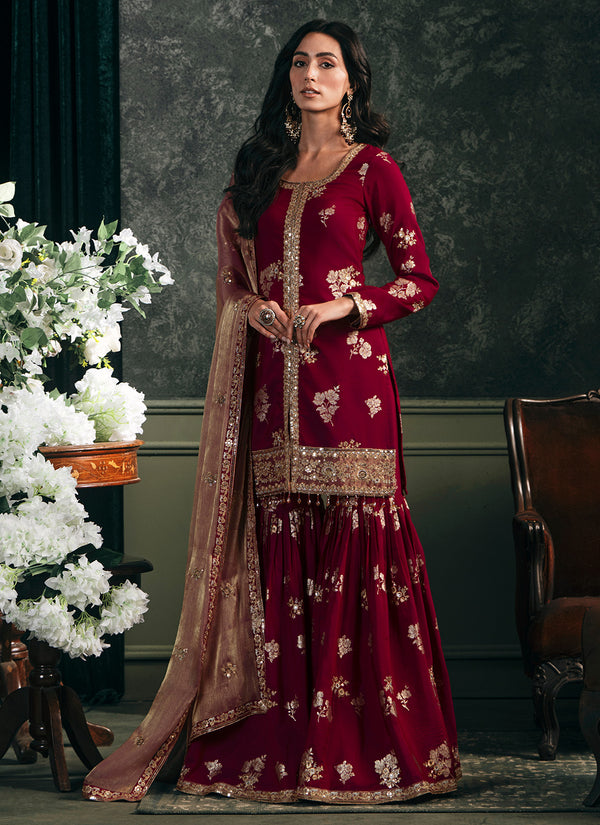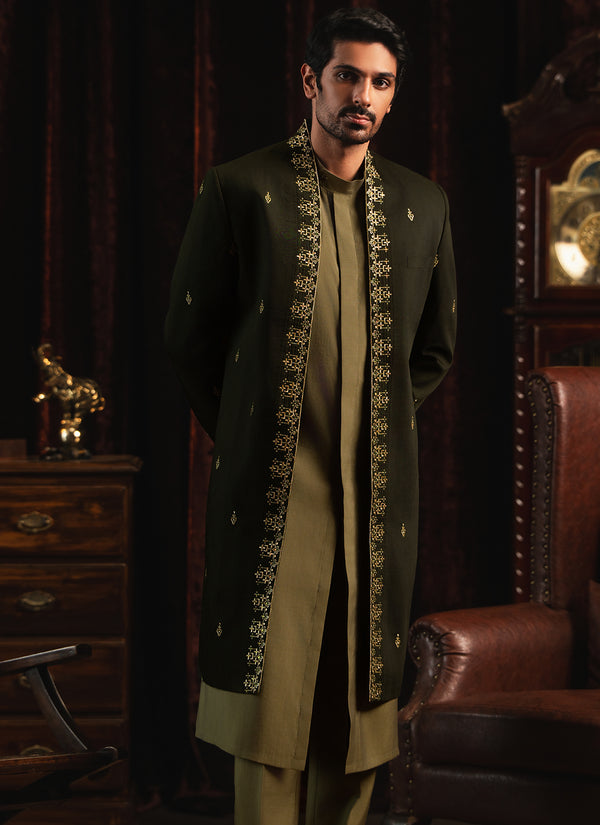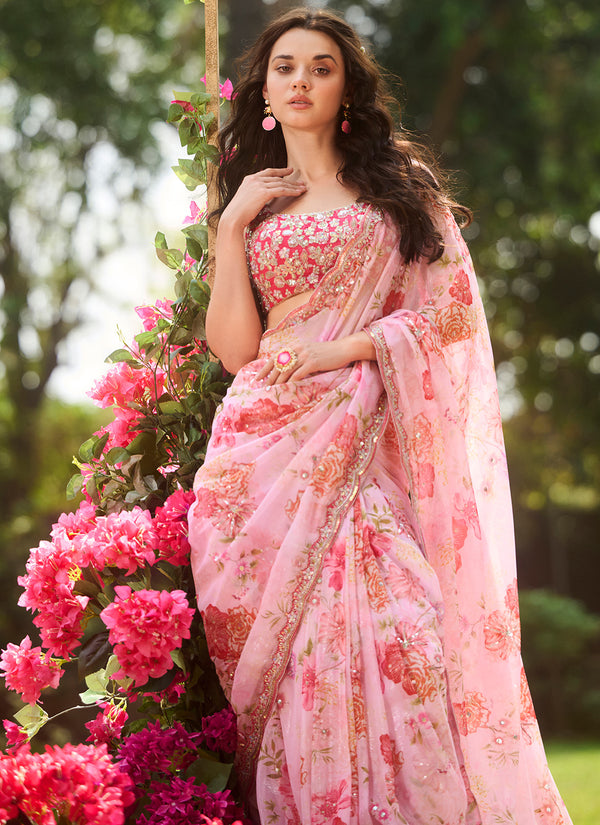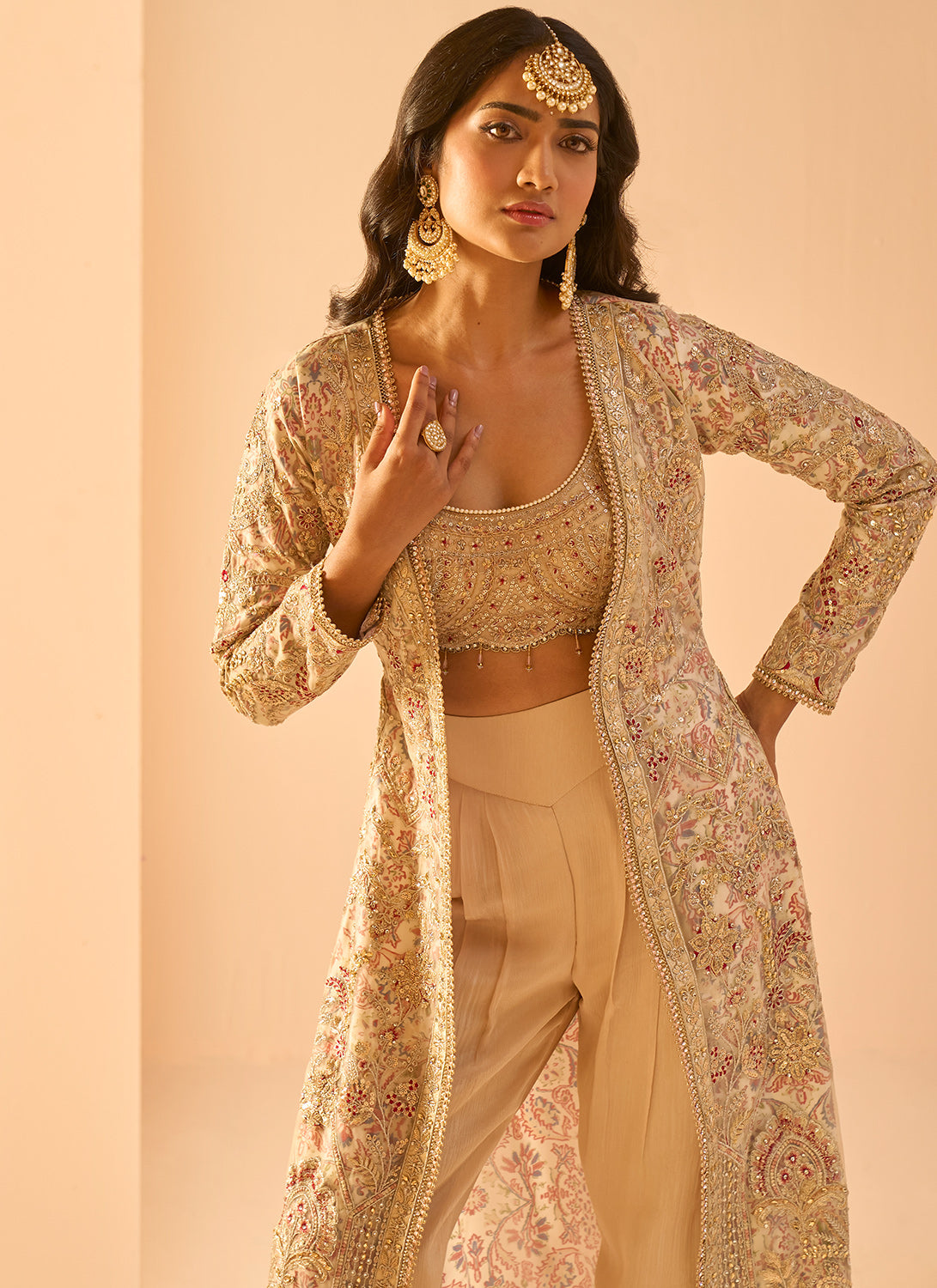
What Is Indian Chic Dress Code? Tips, Examples, & More
If you’ve recently received an invitation to a wedding or upscale celebration that mentions “Indian Chic” as the dress code, you might be wondering exactly what that means. Is it traditional? Is it Western? Is it formal or fun? The answer lies somewhere beautifully in between.
The Indian chic dress code has emerged as one of the most exciting, expressive, and versatile style categories at modern Indian events. It offers the freedom to blend Indian silhouettes and textiles with contemporary tailoring, global trends, and elevated styling—without straying too far from the essence of culture. Think of it as the art of dressing desi with an edge.
What is the Indian Chic Dress Code?
Unlike traditional dress codes that come with stricter definitions, like formal ethnic or black-tie, the Indian chic dress code is far more open to interpretation. At its heart, it’s a fusion of cultures, eras, and aesthetics. You might wear a classic saree but style it with a sculpted blouse and metallic belt. Or choose a structured pantsuit in handwoven silk with statement Indian jewelry.
Indian chic means acknowledging tradition, then elevating it with thoughtful styling, luxurious fabrics, minimalist silhouettes, or bold accessories. It’s about celebrating both your heritage and your personality in one cohesive look. Whether you lean towards maximalist glamour or modern simplicity, this style allows you to bring your individual expression to the forefront.
Mix of Traditional + Contemporary
One of the defining features of this aesthetic is its commitment to balance. Traditional Indian garments, such as lehengas, sarees, anarkalis, or kurtas—are paired with modern shapes or styling techniques. A pastel chikankari kurta worn with cigarette pants and strappy heels offers a refined take on everyday Indian wear.
Similarly, a rich Banarasi skirt worn with a crisp white shirt or bustier top reflects the perfect East-meets-West sensibility. Layering structured jackets with lehengas, or adding long capes over sarees can transform an otherwise traditional outfit into something undeniably chic. The idea is to treat Indian pieces like fashion separates and build elevated looks that retain their roots but feel fresh and current.
Fusion Silhouettes
Fusion wear lies at the core of the Indian chic trend. This includes dhoti-style pants paired with asymmetrical tops, draped saree gowns that eliminate the need for pleating, pre-stitched dupattas, peplum blouses with lehengas, and even jumpsuits crafted in Indian fabrics. These hybrid forms retain the drama and detailing of Indian fashion while embracing global structure and ease of wear.
For example, a long-line jacket worn as a blouse for a lehenga adds a tailored finish, while a one-shoulder kurta styled over palazzos creates an elongated, modern silhouette. The purpose of these mixed forms is to let you move more freely while still commanding attention, which makes them especially popular for cocktail evenings, mehendi functions, and destination weddings.
Rich Fabrics & Minimalist Lines
Indian chic leans heavily on luxurious textures while maintaining clean, intentional lines. Fabrics like silk, velvet, georgette, organza, chanderi, or brocade are often chosen for their ability to reflect light, drape beautifully, and convey opulence without needing too much embellishment.
An organza saree in a jewel tone with a sleek corset blouse, or a floor-length velvet kaftan with mirrorwork detailing, captures this balance between indulgence and restraint. Rather than layering on heavy embroidery or voluminous silhouettes, Indian chic outfits often make a statement with less. The elegance lies in structure, fabric quality, and carefully chosen design details. This minimal-maximal approach creates silhouettes that feel both regal and refreshing.
Elevated Accessories
Accessories can make or break an Indian chic outfit. The styling is rarely conventional—you’ll often find traditional jhumkas worn with a blazer-style blouse, or gold hoops paired with a silk saree. Footwear is equally expressive; embroidered juttis or kolhapuris are worn with gowns, while block heels with mirrorwork make an appearance at afternoon weddings.
Clutches or minaudieres are often small and sculptural, sometimes featuring metallic accents or artisanal embroidery. Belts are a particularly popular accessory in this dress code to cinch a saree, define the waistline of a flowy kurta, or add an edge to a flared lehenga skirt. The goal with accessories is to blend tradition with trend, elevating your look with a deliberate, fashion-forward touch.
Does Indian Chic Vary for Different Events?

Absolutely. The beauty of this dress code lies in its flexibility. Depending on the time of day, type of event, and overall vibe, the interpretation of Indian chic can shift quite dramatically.
Weddings
Indian chic outfits for weddings often skew more glamorous. You’ll see guests in hand-embroidered lehengas paired with bustier-style blouses, or pre-draped sarees with sculptural pleats and embellished belts. Metallic tones, gemstone colors, and luxurious fabrics like velvet or tissue are popular choices here. Men might wear bandhgalas in muted tones with statement buttons, or embroidered Nehru jackets paired with straight-cut trousers and suede loafers. Layering is key—adding an elegant shawl or a structured overlayer can enhance a basic ensemble.
Cocktail Parties
At cocktail parties or receptions, Indian chic leans sharper and more stylized. Women might choose Indo-Western gowns, floor-length jackets with palazzos, or cape-style blouses. Sequins and satin emerge here, as do experimental cuts like asymmetric hemlines and exaggerated sleeves. Men can opt for tailored bandhgalas in unconventional prints, or pair classic kurtas with sharply tailored pants and monk-strap shoes.
Daytime Festivities
Daytime festivities like haldi or mehendi call for a more relaxed, cheerful interpretation of Indian chic. Light fabrics, playful prints, and pops of color define this look. Floral co-ord sets, embroidered kaftans, or layered shararas with crop tops feel both festive and comfortable. Men may prefer linen kurtas in soft pastel hues or Nehru jackets with block prints. Sunglasses, minimal jewelry, and open-toe sandals help bring daytime Indian chic to life.
Indian Chic Outfit Examples for Women

For women, this fusion style is an opportunity to step outside conventional pairings. You could wear a handloom sari with a sharply tailored blazer, or an anarkali with sneakers for an edgy twist.
A sharara set in muted metallics with pearl jewelry is another timeless choice. Saree gowns and lehengas with halter blouses or corset-style cholis also align beautifully with this code. Mixing prints subtly—like floral motifs with stripes—or incorporating Western fabrics into Indian tailoring can add a unique signature to your outfit.

The White and Gold Hand Embroidered Straight Suit also embodies understated Indian chic. Its crisp white base paired with delicate gold embroidery offers a fresh, modern take on festive wear. The straight silhouette keeps the look polished and versatile, while the subtle shimmer adds just the right amount of elegance. Style it with nude heels, minimal gold jewelry, and a sleek clutch for a refined yet contemporary look perfect for daytime functions or intimate celebrations.
The Black and Gold Hand Embroidered Straight Suit is another perfect example of the Indian chic dress code done right. Its elegance lies in the thoughtful balance between timeless tradition and elevated styling. The straight-cut silhouette offers clean, minimalist lines that feel both classic and contemporary, while the rich black fabric acts as a sophisticated canvas for intricate gold hand embroidery. This subtle contrast of shimmer and restraint gives the outfit a luxurious yet refined character.
Style it with modern accents like structured heels, a sleek ponytail, and sculptural gold earrings to lean into the chic aspect. You could even layer it with a tailored jacket or style the dupatta draped over one shoulder and cinched with a metallic belt. Whether you're attending a cocktail night, a festive dinner, or a mehendi soirée, this look captures the essence of Indian chic—graceful, fashion-forward, and effortlessly standout.
Indian Chic Outfit Examples for Men
For Indian chic menswear, invite some subtle sophistication. Swap the usual churidar for slim-cut trousers, or pair a silk kurta with a leather jacket for a striking contrast. Think structured bandhgalas in pastel tones, linen achkans with tonal embroidery, or printed Nehru jackets layered over monochrome sets.
Go for statement shoes, including embroidered loafers or velvet slip-ons, to elevate the outfit without compromising comfort. Add in brooches, scarves, or leather bracelets to add a more modern vibe.

The Light Pink Hand Embroidered Velvet Jodhpuri Set is a striking example of Indian chic for men. The soft pink hue adds a modern, fashion-forward edge, while the rich velvet fabric and intricate embroidery nod to regal Indian craftsmanship.
The structured Jodhpuri silhouette balances tradition with contemporary elegance, making it ideal for weddings, receptions, or evening celebrations. Pair it with polished loafers and a sleek watch to finish the look.
Indian Chic Dress Code vs. Traditional Dress Codes
Style Approach
The traditional Indian dress code prioritizes cultural norms, full sets, and classic color palettes, such as a red lehenga for a bride, or a golden kurta for a groom’s guest. In contrast, the Indian chic style approach is more individualistic and experimental. It places equal emphasis on styling as it does on the garment itself.
Silhouettes
Traditional Indian wear includes sarees, lehengas, and sherwanis in their classic forms. Indian chic reimagines these silhouettes, giving rise to draped sarees, cropped jackets, peplum kurtas, and layered dhotis. The emphasis shifts from heritage preservation to innovation.
Accessories
While traditional looks rely on full bridal jewelry sets, gold bangles, and ornate bindis, Indian chic accessories are minimalist, contrasting, and curated. You’ll often find just one statement piece—be it earrings, a belt, or a unique bag—that pulls the look together.
Vibe
Traditional Indian wear leans formal, grand, and symbolic. Indian chic is intentional yet playful. It allows for more personal storytelling and emotional connection to style. It’s elegance without excess, and culture without costume.
FAQs About Indian Chic Dress Code
What does “Indian Chic” mean on a wedding invite?
It means you’re expected to wear something Indian-inspired but with a modern or fashion-forward twist. The focus is on fusion, style, and polished presentation rather than pure tradition.
Can I wear Western clothes with Indian elements?
Absolutely, that’s what Indian chic thrives on! A contemporary gown with Indian embroidery, or a pantsuit in Banarasi silk, is completely appropriate. It’s all about styling and intention.
Is Indian chic formal or semi-formal?
It can be either, depending on the event. For weddings or evening functions, go formal with silk or velvet ensembles. For day events, you can opt for lighter fabrics and more playful styling.
What fabrics are best for Indian chic outfits?
Silk, georgette, organza, tissue, chanderi, brocade, and velvet are all great options. Choose depending on the season, time of day, and event tone.
Where can I shop for Indian chic styles?
Lashkaraa’s collection features a range of Indian chic looks, from designer sarees to minimal lehenga sets, contemporary menswear, and fusion outfits crafted for the modern dresser. Whether you're looking for polished sophistication or bold experimentation, there’s something in store for every mood and moment.
Indian Chic: Tradition with a Twist
The Indian chic dress code is one of the latest in fashion movements. It allows people to honor their heritage while staying connected to global style, personal comfort, and self-expression. In an era where fashion is deeply tied to identity, Indian chic gives wearers the confidence to show up as their most stylish, expressive selves.
Explore Lashkaraa’s curated collection of modern Indian styles that blend tradition and trend for women and men ready to make a statement.

